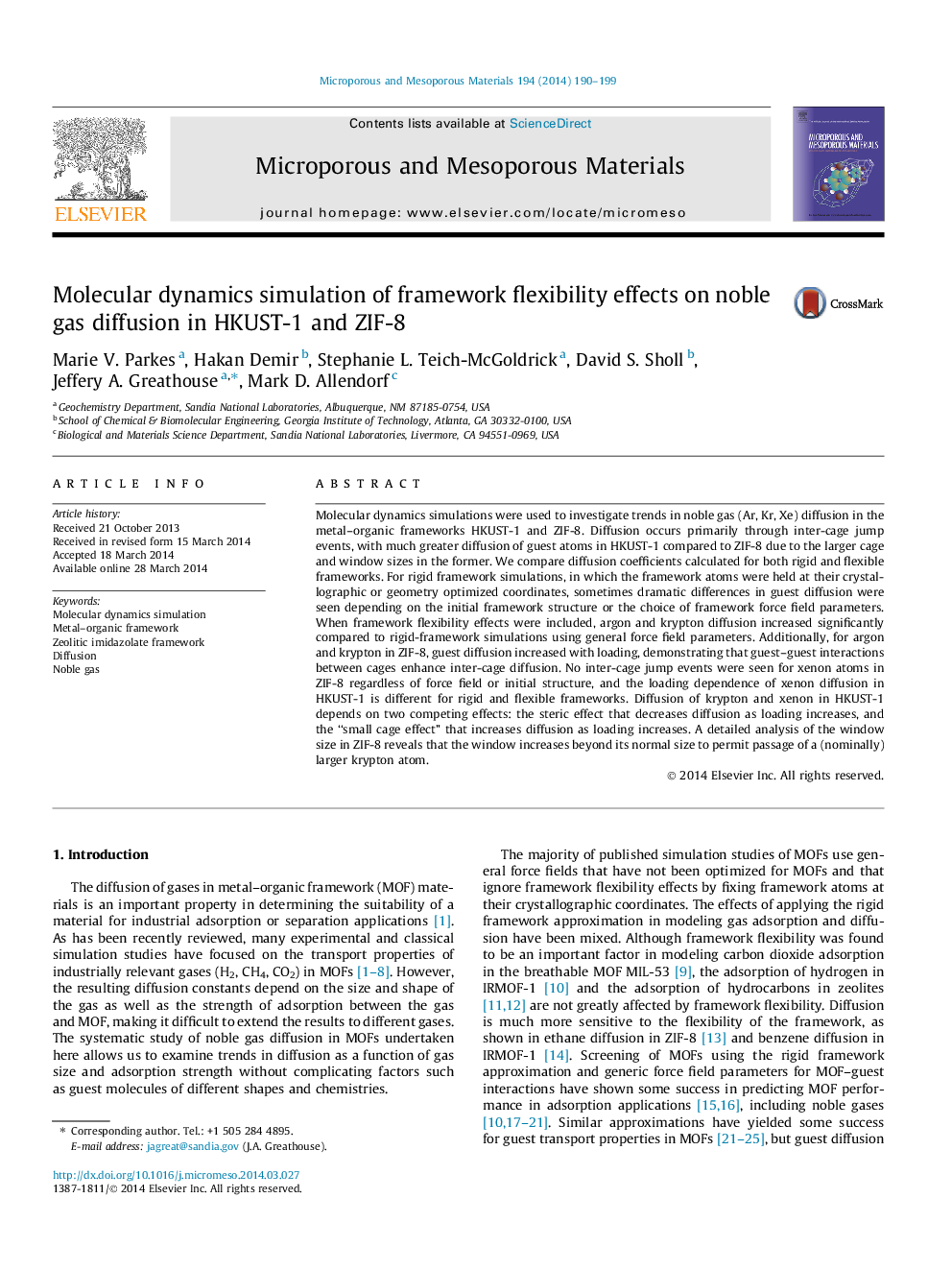| کد مقاله | کد نشریه | سال انتشار | مقاله انگلیسی | نسخه تمام متن |
|---|---|---|---|---|
| 73082 | 49043 | 2014 | 10 صفحه PDF | دانلود رایگان |

• Increased noble gas diffusion rates are predicted using flexible MOF force fields.
• Diffusion of argon and krypton in ZIF-8 increases as loading increases.
• The ZIF-8 window expands significantly to allow similar-sized krypton atoms to pass.
• Diffusion in HKUST-1 depends on both the steric effect and the small cage effect.
• The small cage effect in HKUST-1 increases diffusion with increasing loading.
Molecular dynamics simulations were used to investigate trends in noble gas (Ar, Kr, Xe) diffusion in the metal–organic frameworks HKUST-1 and ZIF-8. Diffusion occurs primarily through inter-cage jump events, with much greater diffusion of guest atoms in HKUST-1 compared to ZIF-8 due to the larger cage and window sizes in the former. We compare diffusion coefficients calculated for both rigid and flexible frameworks. For rigid framework simulations, in which the framework atoms were held at their crystallographic or geometry optimized coordinates, sometimes dramatic differences in guest diffusion were seen depending on the initial framework structure or the choice of framework force field parameters. When framework flexibility effects were included, argon and krypton diffusion increased significantly compared to rigid-framework simulations using general force field parameters. Additionally, for argon and krypton in ZIF-8, guest diffusion increased with loading, demonstrating that guest–guest interactions between cages enhance inter-cage diffusion. No inter-cage jump events were seen for xenon atoms in ZIF-8 regardless of force field or initial structure, and the loading dependence of xenon diffusion in HKUST-1 is different for rigid and flexible frameworks. Diffusion of krypton and xenon in HKUST-1 depends on two competing effects: the steric effect that decreases diffusion as loading increases, and the “small cage effect” that increases diffusion as loading increases. A detailed analysis of the window size in ZIF-8 reveals that the window increases beyond its normal size to permit passage of a (nominally) larger krypton atom.
Figure optionsDownload as PowerPoint slide
Journal: Microporous and Mesoporous Materials - Volume 194, August 2014, Pages 190–199